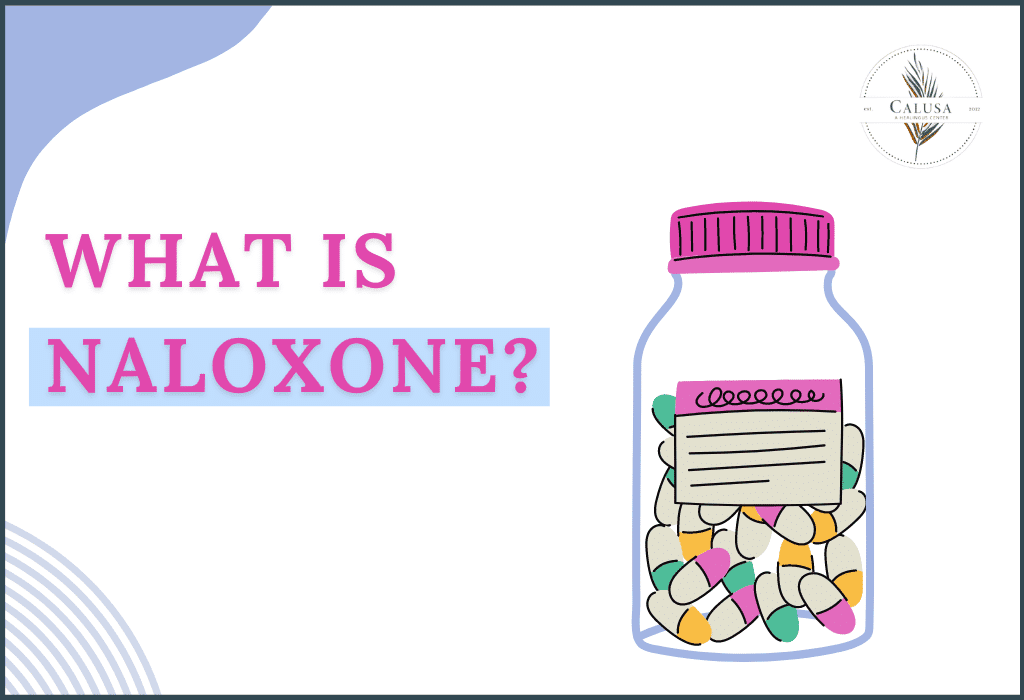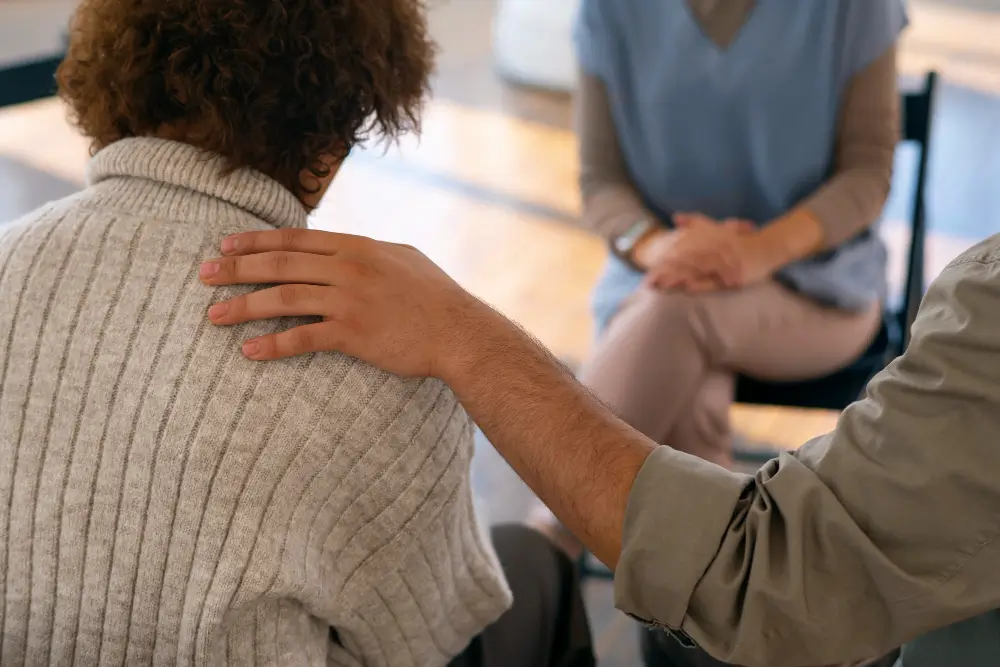Have you heard of a drug called naloxone? What is naloxone and why does it matter? Naloxone is a drug that has been formulated to quickly reverse opioid overdoses. It is an important weapon in the war against the opioid epidemic, which has left many people suffering worldwide.
Knowing what naloxone is and how it works can save lives. It’s important to know its uses and effects, particularly if you or someone you know may be at risk for an overdose. In case of an emergency, this understanding will enable prompt action resulting in desired results.
In this blog, we are going to take a deeper look into what naloxone means. We shall discuss its uses, mechanisms, benefits, as well as any side effects that it might pose. By the end of the article, you should have a good grasp on this life-saving medication.
Overview of Naloxone
Naloxone is a medicine specifically designed for countering opioid overdose symptoms. So what exactly is naloxone? It acts as an opioid antagonist by binding to receptors in the brain where opiates like heroin or prescribed painkillers attach.
History and Development
Understanding naloxone conceptually entails knowledge about its historical background. Initially established by scientists from Sankyo –a Japanese pharmaceutical company during the 1960s it has now become indispensable in the medical field.
Forms and Brand Names
To know what naloxone is, it is also necessary to know its various forms. These forms include nasal sprays as well as injectable solutions.
Popular brand names are:
- Narcan: This can be easily administered through the nose by any person.
- Evzio: This auto-injector is meant for fast and easy use during emergencies..
By understanding the history of what naloxone is, how it works, and the different dosage forms available, the importance of this drug in saving lives and fighting against the opioid epidemic will become more meaningful.
Mechanism of Action
When opioids are consumed by somebody, they stick to opioid receptors in the brain. In addition to pain relief, this interaction may lead to such risky effects as unconsciousness or slow breathing. However, what naloxone does is not less amazing it competes with opioids for these same receptors using a very special method.
Receptors Involved (Opioid Receptors)
- These proteins found in the brain and central nervous system are called opioid receptors.
- They play a role in relieving pain and may be affected by opioids too.
How It Reverses Opioid Effects
- Naloxone outcompetes opioids at opioid receptors when it attaches itself to them better than any other similar substance would do.
- It pushes out all opioids from such receptors, thereby reversing their impacts.
- This action quickly restores normal breathing and consciousness allowing someone’s life to hang on for dear life again until professional help arrives urgently thereby preventing an overdose from becoming fatal or leading to irreversible damage that could have been avoided if it had been addressed promptly.
In summary, naloxone is a vital antidote to opioid overdose because it effectively blocks the deleterious effects of opioids by interacting with opioid receptors. What naloxone is and how it works can save lives in an emergency.
How Naloxone Works
Naloxone is a critical tool in saving lives during opioid overdoses. But what are we talking about when we mention naloxone with life-threatening emergencies? Let’s make it easier for everyone.
Administration Methods
Nasal Spray
- Better known as Narcan.
- It’s easy to use, and no medical training is required.
- Spray into the person’s nostril.
Injection
- It comes as Evzio.
- Given via injection into the muscle, usually the thigh area.
- Some skill in giving shots is needed here.
Onset and Duration of Action
Onset:
- Works within minutes of administration beginning.
- Quick reversal of the effects of opioid overdose happens simultaneously with this process.
Duration
- Effects last approximately 30-90 minutes,
- Medical assistance will be necessary even if Naloxone wears off before opioids do.
Situations Where Naloxone is Used
Opioid Overdose
- Used when someone has overdosed on opioids like heroin, morphine, or prescription painkillers.
- Signs include reduced or arrested breathing; being unconscious; lips turning bluish.
Availability:
- Increasingly available to the public and first responders.
- Breathing must be restored urgently during emergencies.
In saving lives during an opioid overdose, one can understand what naloxone is and how it acts.
Uses of Naloxone
Naloxone has various uses such as reversing the effects of opioid overdose. Too much intake of opioids can cause a person’s breathing to slow down or stop; a dangerous condition that may lead to death. It works by rapidly attaching itself to the opioid receptor sites in the brain displacing the opioids and reversing their impact. This facilitates normal breathing and saves people’s lives in emergencies. It is therefore necessary for anybody likely to come across a case of an opioid overdose to know what naloxone is and how it works.
Use in Hospitals and Emergency Settings
- Standardized therapy is used by healthcare facilities for treating overdoses caused by opioids.
- Consequently, stabilizes patients by injection or nasal spray.
- This eventually assists medical practitioners in addressing emergencies promptly through an immediate reversal of overdose effects.
Availability to the Public and First Responders
- Becoming more available for general public use as well as being accessed by first responders.
- Can be obtained without prescription from several areas targeting at-risk people or those who might see a drug user experiencing overdose symptoms.
- It provides immediate assistance and improves the ability to respond in life-threatening conditions..
Legislation and Accessibility
- Laws have made naloxone more readily available.
- Many regions allow pharmacies to dispense naloxone without a prescription.
- Training and legal provisions support widespread use and accessibility.
Common Side Effects
Naloxone is a valuable drug for counteracting opioid overdoses. However, like all drugs, it has certain negative effects. Below, we will explain some common side effects associated with naloxone, and how they vary depending on the method of administration.
List of Potential Side Effects:
- Puking and Nausea: Some people may feel nauseous or vomit after being given naloxone; this is often due to opioids being reversed, especially if the overdose is severe.
- Shivers and Sweats: It’s quite normal for one to sweat or shiver when naloxone brings back brain activity to normal.
- Heightened Pulse Rate: In some individuals, taking naloxone will lead to an accelerated heart rate that can be detected
- Headache or Dizziness: This occurs less frequently but might occur in patients who were already in a compromised state before getting naloxone.
Severity and Management of Side Effects:
- The majority of side effects from naloxone are mild and temporary. For example, once the body adjusts to a reversal of opioids such as nausea and sweating usually go away.
- It is important to consult a doctor if side effects become severe or persistent. In cases involving intense nausea or significant discomfort, healthcare professionals could provide additional therapies aimed at managing these reactions.
Differences in Side Effects Based on Administration Method:
- Nasal Spray: Nasal irritations or congestion are some of the side effects that can be observed when naloxone is administered using nasal sprays. This administration method is designed to facilitate ease of use and is generally associated with fewer side effects than injections.
- Injection: More pronounced side effects, such as pain at the site of injection, increased heart rate, etc. may accompany naloxone injections. Injection as a method could also bring an immediate response from the body hence leading to these aforementioned side effects.
Anyone involved in emergencies or considering naloxone for personal use should know what naloxone is and its potential side effects. Understanding these side effects will help you manage them better and comprehend how naloxone mitigates opiate overdose.
Conclusion
Naloxone is a necessary tool in combating the opioid crisis engulfing us currently. It saves lives because it has a quick action that can reverse life-threatening opioid overdoses. Knowledge about the drug’s mode of action; and its methods of administration, including possible side effects, should be familiarized by anyone who might possibly experience an overdose.
Don’t hesitate to seek out information and resources about opioid overdose prevention and naloxone availability at Calusa. Together, we can make a difference in reducing the devastating impact of opioid overdoses.










